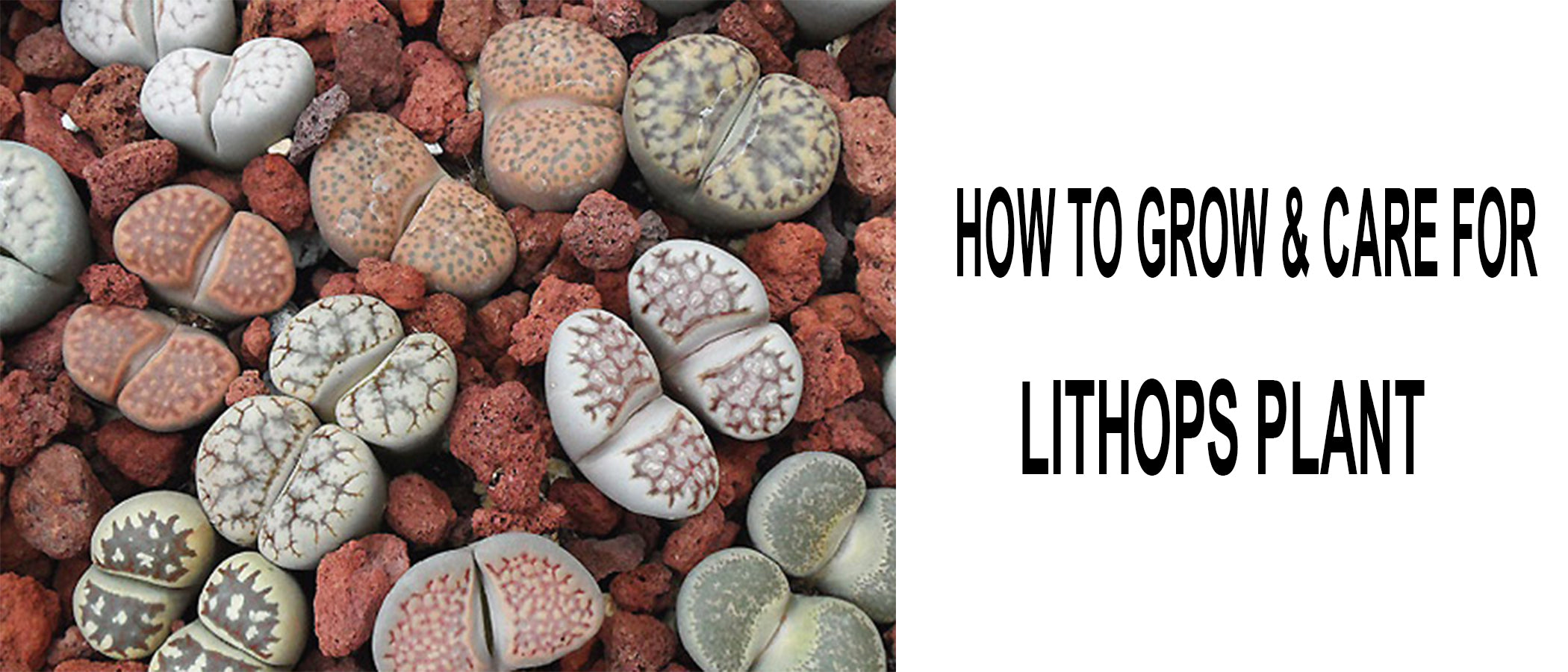Your cart is currently empty!

Care Tips For Lithops

Lithops, also known as living stones, are a fascinating group of plants that require a few care tips to thrive. These low-maintenance succulents are a great addition to any home garden!
These tiny houseplants are easy to care for, but it’s important to remember the type of climate they originate from and follow their seasonal habits. Watering them too much is also a no-no.
Watering
Lithops are unique plants that grow entirely underground. They have long taproots that don’t get surface water, so you need to be careful with how much and when you water them.
During the growing season, water them every one to two weeks. They do best when watered in the morning, giving them time to draw up water before nightfall.
When your lithops start to wrinkle or sink, that’s a sign they’re getting thirsty and need a drink. If they’re wrinkling or sinking too much, give them a light squeeze and see if they feel soft.
Once the old leaves are dry, it’s safe to begin watering again – but don’t overwater. They’re only able to absorb the nutrients and moisture from their old leaves during this period, so overwatering can stunt the new growth that will be forming.
In late spring, some deep watering is needed – but again make sure you let the soil dry out properly between waterings. As summer approaches, reduce watering to avoid causing brown spots or root rot.
Light
Lithops, also called living stones, are rare succulent plants that look like flowering stone pop out of the soil surface. They are easy to care for but they can also be difficult to grow.
Fortunately, they can be grown indoors as long as you provide ample light. They love a south-facing window, but they can be placed on an east-facing wall as well.
Keep in mind that bright sunlight can burn your lithops, so don’t expose them to it too much. Alternatively, place them in a window that gets a little shade in the afternoon or cover them up when it’s hot outside.
The leaves of a lithops plant split every year in preparation for new growth. During this time, you should avoid watering them to ensure that the old leaves can absorb all the nutrients needed for the new leaves to grow.
Overwatering is also an issue for lithops plants, as it can attract pests. Spider mites, thrips, scale insects, mealybugs, and aphids can be a problem, so treat your lithops with insecticidal soap when you notice them.
Temperature
Lithops thrive in warm temperatures that don’t drop below 50 degrees Fahrenheit. However, they don’t like the cold. This is because the cell walls in the thick leaves can rupture when exposed to cold weather.
If you live in a cooler climate, or where winters tend to be very long and snowy, you may need to bring your plants indoors during the colder months. This will help induce a natural dormancy cycle and allow the soil to dry out during the hot summer months.
It’s also important to rotate your lithops so they get enough direct sunlight each day. This will prevent etiolation, which causes the leaves to stretch out in an attempt to receive as much light as possible.
During the spring and fall, water only when the soil has dried to four or five inches below the surface. Watering during the dormancy periods can cause root rot which can lead to problems such as pests.
Fertilization
Lithops are succulents in the family Aizoaceae, native to South Africa and Namibia. They look like stones, but they are actually living plants that evolved a unique camouflage to protect them from browsing herbivores.
Species and varieties of lithops come in a wide range of leaf, flower, and pattern colors. These include muted gray, green, yellow, and brown to pink, cream, and orange.
The most common way to start a new lithops plant is by germination from seed. The seed capsule takes 8 to 9 months to develop and should be collected when it is dry but before it splits open.
Fertilize your lithops with a lightly diluted, low-nitrogen cactus fertilizer in the spring to encourage lush foliage and promote healthy growth. Apply only a small amount to each plant, as too much may burn the leaves and cause root damage.
by
Tags: